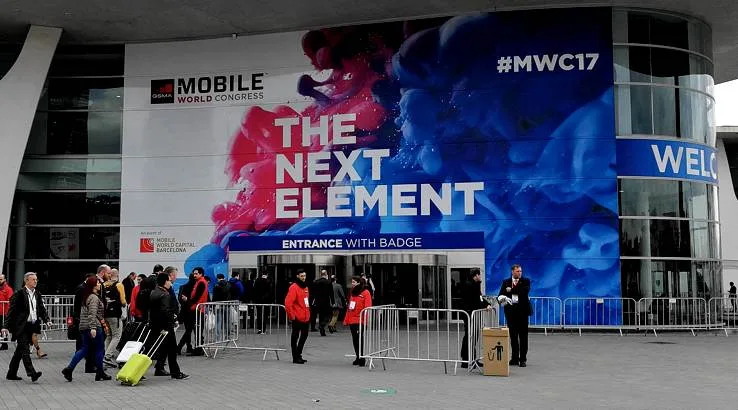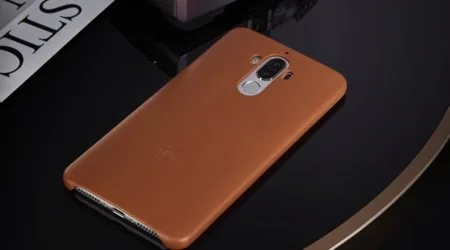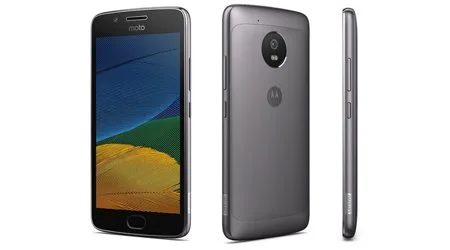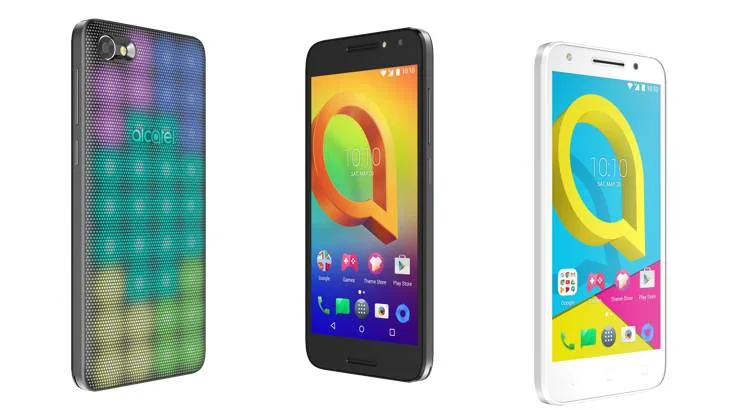MWC 2017: All the news from the Barcelona phone show

Mobile World Congress 2017 brought us a revived Nokia and Blackberry, LG's shiny G6, Sony's Xperia XZ Premium and plenty more mobility news.
What is Mobile World Congress?
Mobile World Congress is the largest and most significant mobile-first conference in the world, held annually in Barcelona. It’s run by the GSMA, or the GSM Association, a group that looks after the interests of mobile network operators worldwide. MWC does incorporate several sub-conferences in other locations, but the primary conference is held in Barcelona, each year.
Mobile World Congress 2016 brought us some of the best phones of the year, including the Galaxy S7, Galaxy S7 Edge and LG G5, as well as hardware announcements from everyone from Huawei to Sony.
Mobile World Congress 2017 brought us new phones, but also news covering everything from the future of mobile networks to streaming media, tablet devices and just about any other factor that could be tagged as "mobile".
When did Mobile World Congress 2017 take place?
Mobile World Congress 2017 officially took place between 27 February 2017 and 2 March 2017, although in terms of news announcements around hardware, software and partnerships from the show, events started from 25 February 2017.
Here's what we saw at the show from each of the major manufacturers:
Samsung
It was widely assumed that Samsung would announce the Samsung Galaxy S8 at Mobile World Congress, because history suggested that it would follow its usual course and announce the phone on the night before the show itself kicks off. The Galaxy S8 will have a lot of Samsung’s hopes resting on it after the explosive failure of the Note 7.However, Samsung quashed those rumours early, stating that they wouldn’t announce the S8 at MWC at all.
Instead Samsung used MWC to launch three new tablet devices. One update to the Galaxy S Android tablet line was announced as the Galaxy Tab S3, while two new Windows 10 tablets under the Galaxy Book branding were announced. Our time testing the Galaxy Book line suggests that they could be solid premium 2-in-1 style devices, but that's a market with plenty of existing alternatives.
LG
LG went head to head with Samsung at MWC 2016 pitting its modular but ultimately disappointing LG G5 against the Galaxy S7 and S7 Edge.LG played it straight by launching the LG G6 at MWC.
The LG G6 uses a more conventional design for its latest premium smartphone, which will launch in Australia on 28 March 2017 with Telstra as the exclusive carrier partner at launch. The LG G6 runs on the Snapdragon 821 SoC, the same processor as Google’s Pixel and the HTC U Ultra, a step behind this year’s Snapdragon 835.
LG didn’t confirm it, but it’s widely expected that this is due to Samsung scoring the first limited time exclusive on that particular processor, having helped to design it.
The LG G6 includes a range of premium features, from dual camera array at the rear that once again provides standard and wide lenses, as well as the introduction of IP68 water resistance. It features an 5.7 inch QHD+ (1,440×2,880) display with an 18:9 ratio, which LG states is ideal for multi-tasking, a key feature of Android 7.0. It will also be the first shipped phone outside the Pixel family to feature Google Assistant. Our initial impressions of the LG G6 suggests that LG has done what it needed to do to remain competitive in the premium phone space.
Sony
It wasn’t that long ago that Sony launched the generally excellent Sony Xperia XZ, but that didn’t stop the Japanese handset maker from announcing what was arguably the best handset shown at Mobile World Congress.It did so in the form of the impressive Sony Xperia XZ Premium, a phone that really does appear to have all the trimmings and then some. It runs on the Snapdragon 835 SoC, which means we won’t see it in the market until mid-June at the earliest. That being said, what we did see at MWC 2017 was highly impressive.
The headline feature for this phone is the seriously impressive 960 frames per second "Motion Eye" camera. It can’t capture for a long period of time, but in our hands-on time with it, it seriously impressed. Equally impressive is the Xperia XZ Premium’s 4K HDR display. Sony used clips from Amazon Prime shows to demonstrate the capabilities of such resolution and colour on what is only a 5.5 inch display, and while that’s arguably overkill, sometimes going all out can be a lot of fun.
Huawei

Huawei’s MWC story was one of two phones and a new range of Android Wear watches. It was widely expected that it would use MWC to launch a successor to the very successful Huawei P9, and that’s what it did, announcing the Huawei P10 and Huawei P10 Plus.
The P10 uses the same dual lens style as the P9 and for that matter the Huawei Mate 9, with a strong focus on portrait photography as a key selling point. Huawei will produce the P10 in a wide variety of colours, although it’s not likely we’ll officially see every colour here in Australia. Our impressions of the P10 is that it’s something of a pocket rocket, given that most powerful phones these days tend towards much larger display sizes, and the P10 rocks a simple 5.1 inch display.
Lenovo/Moto

The essential big news that Moto had to share regarding its new phones at MWC leaked well before the event itself, with the Moto G5 and Moto G5 Plus.
Both are mid-range phones at mid-range prices, but our impressions of them are that they’re quality hardware for that not-quite-budget-not-quite-premium space. Moto reckons that the previous Moto G phones have been amongst their best selling ever, and the G5 and G5 Plus look to continue that trend.
Moto didn't announce any new Moto Mod compatible phones, but it did show off a variety of new Moto Mods to add to the existing Moto Mod range, primarily focused around charging solutions
There's no word as to Australian availability or pricing for the new Moto phones or Mods, but it's a range that usually does appear in Australia at some point.
BlackBerry
BlackBerry as a brand no longer has the shine it once had, but MWC 2017 may prove to be vital to the future existence of BlackBerry branded hardware at all. The company itself (also confusingly called BlackBerry) has licensed out the manufacturing of new handsets to third parties.The first company to step up has been TCL, owners of the Alcatel brand. At MWC 2017, it unveiled the BlackBerry KEYone, an Android based BlackBerry phone with that famous physical keyboard.
We had some hands-on time with the phone, and came away quite impressed. There’s not much competition if you want a physical keyboard on a phone, but it appears that TCL has kept with the quality formula of the classic BlackBerry phones for the KEYone.
Alcatel

TCL’s primary brand in the Australian market isn’t BlackBerry, but instead budget phone maker Alcatel. Alcatel’s positioning at MWC 2017 was all about fun, inexpensive devices as part of a continuing push for the youth market. The highlight of its MWC 2017 range was the Alcatel A5 LED, a smartphone with an optional disco backplate that lights up in response to calls, music or user-inspired patterns. It will be joined by the lower cost A3 and U3 handsets, as well as a low-cost Windows 10 tablet with integrated 4G LTE in the keyboard, the Plus 12.
Nokia
Hey, remember Nokia? Once upon a time, Nokia was the name in mobile phones, but then it went and sold that mobile business in its entirety to Microsoft, at which point it agreed not to market phones under its own name for a couple of years. That period has now expired, and HMD Mobile, a Finnish company that has licensed the Nokia name from Nokia itself unveiled a range of handsets at MWC 2017.Easily the oddest phone at MWC 2017 was the revamped Nokia 3310. A deliberate throwback phone, the 3310 garnered a lot of attention, although as we noted in our hands-on review, while it’s a fine simple phone, the fact that it’s 2G only makes it a non-starter for the Australian market. If the prospect of a feature phone in Australia tempts you, there are plenty of choices already available.
What we could see here would be Nokia’s other phones announced at MWC 2017, with the affordable Nokia 3, Nokia 5 and a global edition of the Nokia 6 all on show. Nokia is pursuing a similar strategy as Alcatel in specifically targeting the budget to mid-range market, and that’s a space that is especially vibrant in Australia right now.
All the MWC 2017 headlines

Samsung announces Galaxy Tab S3 and Galaxy Book
Samsung may not have brought its Galaxy S8 to Mobile World Congress, but it did announce new tablets: the Galaxy Tab S3 and Galaxy Book tablets.
Read more…
Samsung reveals details of Galaxy S8’s Exynos 8995 processor
Higher performance and much lower battery consumption for Samsung’s in-house mobile CPU.
Read more…
Samsung teases alternate Galaxy S8 processor
Will the Samsung Galaxy S8 come in two versions like its predecessors?
Read more…
Samsung reportedly locks down Snapdragon 835
New reports suggest that the Snapdragon 835, Qualcomm’s fastest processor ever might be an early Samsung Galaxy S8 exclusive.
Read more…Follow us for all the latest mobile phone news and deals
Image: Shutterstock



